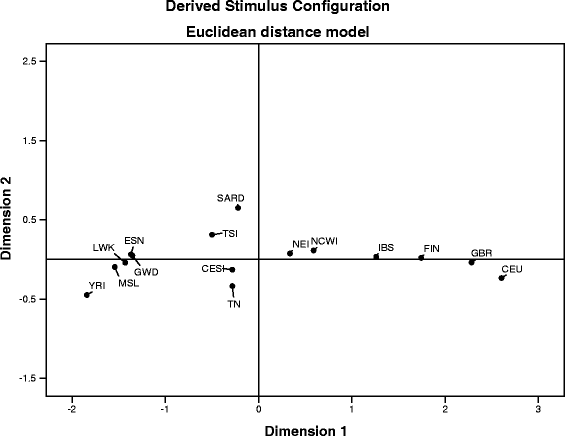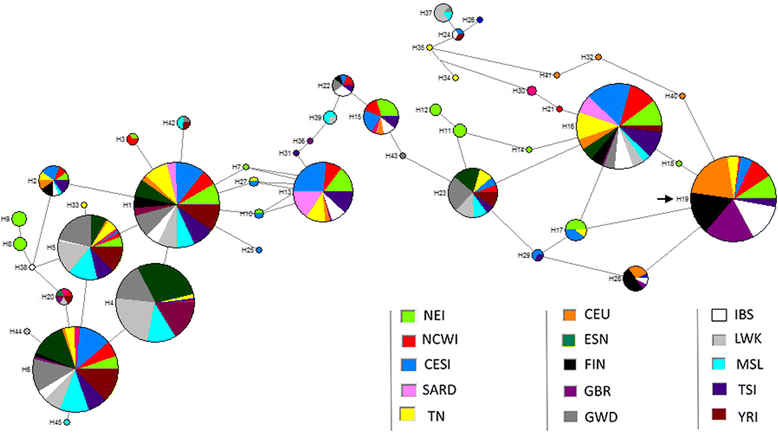Lactase persistence in Tunisia as a result of admixture with other Mediterranean populations
- PMID: 28855970
- PMCID: PMC5571577
- DOI: 10.1186/s12263-017-0573-3
Lactase persistence in Tunisia as a result of admixture with other Mediterranean populations
Abstract
Background: The ability to digest lactose after weaning, namely, lactase persistence (LP), is encoded by polymorphisms in the MCM6 gene and varies widely in frequency among different human populations. Although, evolution of LP-related genetic variants was investigated in many groups of Sub-Saharan African, Middle Eastern, and European ancestry, only few studies have focused on populations from North Africa and no data are especially available from the Tunisian one. For this reason, there is an urgent need to investigate the frequency patterns at these loci in Tunisia since this adaptive trait is implicated in health.
Methods: Forty SNPs covering the LCT/MCM6 genes and including the two functional variants - 13,910 C > T and - 22,018 G > A were genotyped in 117 Tunisian individuals using the Sequenom Mass Array technology. The observed nucleotide and haplotype patterns of variation were then compared with those of several African, European, and Mediterranean human groups for which comparable data were publicly available. Admixture analysis on a 5 Mb genomic region surrounding the LCT/MCM6 loci was also performed by extracting genotypes from a previously generated genome-wide dataset in order to deepen the reconstruction of the evolutionary history of these loci.
Results: We found that lactase non-persistence (LNP)-related alleles and haplotypes were predominantly present in the examined population. A clear differentiation between Tunisian, African, and North European/North Italian samples was found, while the Tunisian population showed more genetic affinity to Central and South Italian groups.
Conclusions: Our study provided a first report of LP-associated alleles and haplotypes in the Tunisian population. We highlighted a gradient followed by LP diffusion from Europe to North Africa. Based on the rich historic background of Tunisia, we suggest that this adaptive trait was introduced in that geographic region by a relatively recent gene flow.
Keywords: Admixture; LCT; Lactase persistence; MCM6; Natural selection; North Africa; Tunisia.
Conflict of interest statement
Ethics approval and consent to participate
The study was approved by the Ethics Committee of the Institut Pasteur de Tunisin Tunis, Tunisia under the registration numbers IRB00005445, FWA00010074, and PV09/06, IRB# 0000000044. All participants provided written informed consent.
Consent for publication
All authors have agreed to its publication in
Competing interests
The authors declare that they have no competing interests.
Publisher’s Note
Springer Nature remains neutral with regard to jurisdictional claims in published maps and institutional affiliations.
Figures



References
LinkOut - more resources
Full Text Sources
Other Literature Sources
Research Materials
Miscellaneous

